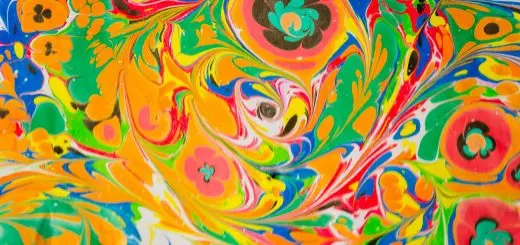How Did Halloween Become Associated with Trick-or-Treating?

Looking for more amazing products? Check out our online store and explore our collection here! Happy shopping!
Before diving in, please note: This post is for informational purposes only. If you’d like to know more about how we approach topics, feel free to check out our friendly Disclaimer Page.
Hey there, amazing readers! 
We’re committed to delivering quality posts, and your support (even just sticking around despite the ads) means everything to us. So, bear with us, and thanks for helping us keep the good vibes rolling. Now, on to the fun stuff!
TRANSLATE BUTTON AT THE END OF THE ARTICLE
Introduction
Halloween is a time for costumes, spooky decorations, and, most notably, trick-or-treating.
This beloved tradition of children visiting homes to collect candy has become a hallmark of Halloween festivities.
But how did this practice come to be so closely linked with Halloween?
In this article, we’ll explore the origins and evolution of trick-or-treating, tracing its history from ancient customs to modern-day practices.
The Origins of Trick-or-Treating
Ancient Traditions
The roots of trick-or-treating can be traced back to ancient Celtic and European traditions.
The Celts, who celebrated Samhain around October 31st, believed that the boundary between the living and the dead was blurred during this festival.
To appease spirits and ward off malevolent entities, they would leave offerings of food and drink outside their homes.
In medieval Europe, the tradition evolved into a custom known as “souling.” On All Hallows’ Eve, poor people would go door-to-door asking for “soul cakes” – small, round cakes – in exchange for prayers for the deceased.
This practice was part of a larger tradition called “guising,” where people would dress in costumes and perform songs or recite poetry in exchange for treats.
The Evolution in America
The practice of trick-or-treating began to take shape in North America in the early 20th century.
Early Halloween festivities in the United States and Canada included various activities like parties, games, and pranks.
However, it wasn’t until the 1920s and 1930s that trick-or-treating as we know it began to emerge.
During the Great Depression, trick-or-treating became a way for communities to foster a sense of togetherness.
Instead of causing mischief, children would visit homes to receive small treats, such as candy or fruit, from their neighbors.
This practice was encouraged as a way to keep children occupied and reduce vandalism.
The Rise of Trick-or-Treating
Post-War Popularization
Trick-or-treating gained significant popularity in the 1940s and 1950s, largely due to its depiction in media and the commercialization of Halloween.
The post-World War II era saw a rise in consumerism and a growing emphasis on family-oriented activities.
Halloween became increasingly commercialized, with candy manufacturers promoting the idea of trick-or-treating as a fun and safe way for children to celebrate the holiday.
The 1950s also marked the beginning of widespread trick-or-treating in suburban neighborhoods, where families embraced the tradition as a way to engage with their community.
This period saw the establishment of standardized practices, such as children dressing in costumes and visiting homes in their neighborhood to collect candy.
Modern Traditions
Today, trick-or-treating is a central part of Halloween celebrations in many countries, particularly in North America.
The tradition has evolved to include elaborate costumes, themed decorations, and community events.
Schools, organizations, and businesses often host Halloween parties and trick-or-treating events for children.
In recent years, there has been a resurgence of interest in creating safe and inclusive environments for trick-or-treating.
Communities have organized “trunk-or-treat” events, where families decorate their vehicles and hand out candy in designated areas, providing a controlled and festive atmosphere for children.
The Impact of Trick-or-Treating on Halloween Culture
Community Engagement
Trick-or-treating has played a significant role in fostering community spirit.
It encourages neighborly interaction and creates a sense of shared celebration.
The tradition allows for social bonding and reinforces community ties, as families come together to participate in the holiday.
Economic Influence
The commercialization of Halloween has had a considerable impact on the economy.
The sale of costumes, decorations, and candy generates significant revenue each year.
Trick-or-treating drives consumer spending, as parents purchase costumes and treats, contributing to the economic significance of the holiday.
Cultural Variations
While trick-or-treating is most common in North America, similar traditions exist around the world.
In some countries, children participate in activities like “bob a apple” or “trick-or-treat” in different forms.
Each culture adapts the tradition to fit its own customs and celebrations, adding to the rich diversity of Halloween practices.
Conclusion
The tradition of trick-or-treating has a rich history rooted in ancient customs and has evolved significantly over the centuries.
From its origins in Celtic and medieval European practices to its modern-day popularity, trick-or-treating has become an integral part of Halloween celebrations.
The tradition not only provides a fun and festive activity for children but also fosters community engagement and contributes to the economic impact of Halloween.
As we continue to celebrate Halloween, trick-or-treating remains a cherished tradition that brings joy and excitement to people of all ages.

The Enlightenment Journey is a remarkable collection of writings authored by a distinguished group of experts in the fields of spirituality, new age, and esoteric knowledge.
This anthology features a diverse assembly of well-experienced authors who bring their profound insights and credible perspectives to the forefront.
Each contributor possesses a wealth of knowledge and wisdom, making them authorities in their respective domains.
Together, they offer readers a transformative journey into the realms of spiritual growth, self-discovery, and esoteric enlightenment.
The Enlightenment Journey is a testament to the collective expertise of these luminaries, providing readers with a rich tapestry of ideas and information to illuminate their spiritual path.
Our Diverse Expertise
While our primary focus is on spirituality and esotericism, we are equally passionate about exploring a wide range of other topics and niches 

To ensure we provide the most accurate and valuable insights, we collaborate with trusted experts in their respective domains 
Our blog originally focused on spirituality and metaphysics, but we’ve since expanded to cover a wide range of niches. Don’t worry—we continue to publish a lot of articles on spirituality! Frequently visit our blog to explore our diverse content and stay tuned for more insightful reads.
Hey there, amazing reader! 
Check out our store here and take a peek at some of our featured products below! Thanks for being awesome!










